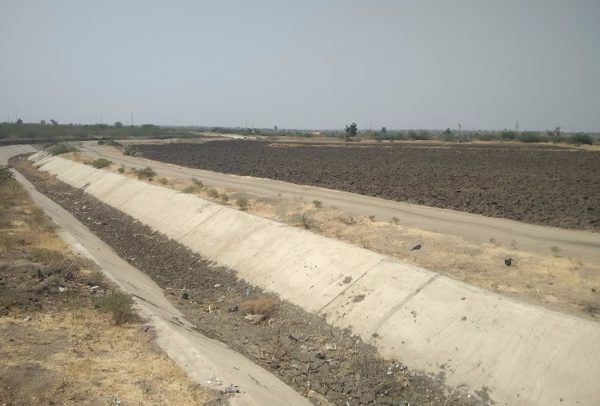Why is Karnataka growing water-intensive crops in arid regions?
While Karnataka’s farmers are decrying the government’s decision to release water to Tamil Nadu in compliance with the Supreme Court’s direction, a look inwards is also perhaps warranted.
Karnataka’s cropping patterns have shifted in at least two major ways in the past four decades, moving away from millets that grow well in arid areas and towards water-intensive crops enabled by irrigation.
In the past 25 years, the area under sugarcane has grown by five times. The staggering increase takes on grave proportions when seen in the context of Karnataka’s geographical and hydrological conditions.
About 80% of Karnataka’s land area is drought-prone, followed by, ironically, Tamil Nadu, at slightly over 65%. Karnataka is also the second-most arid state after Rajasthan.
2015-16 is the third consecutive drought that the state has faced, and was the most severe in 40 years. When the drought was at its worst this summer, just three of the state’s districts were completely drought-free, while parts of every other district were affected. Besides the water-rich twin coastal districts of Udupi and Dakshina Kannada, the drought spared only an unnaturally urbanized Bengaluru district. Groundwater levels are also the lowest they’ve been in many years.
In short, Karnataka has a water problem. Despite this being the state’s reality, politicians have been making tall promises, stopping short of promising water from Mars.
Shift in agriculture
Government figures show that from the 1970s and up to 2014-15, the area under sugarcane cultivation has grown by a massive five times. Sugarcane is an annual crop, grown in varying degrees in 22 of the state’s 30 districts.
Data from the All India Report on Agricultural Census of the year 1970-71, Ministry of Agriculture, shows that the area under sugarcane in 1970-71 was 91,245 Ha. Of this just 296 acres was unirrigated land.
According to the Economic Survey of Karnataka 2014-15, farmers planted sugarcane on 6.26 lakh Ha that year. This is an increase of 586% in 40 years.
However, with over 6 lakh Ha under the crop, it still forms just 5% of the total area under cultivation in Karnataka. For the same period, paddy increased by 20%. Paddy currently constitutes about 10% of the total area under cultivation.
Although Mandya and Mysuru are recognized as the state’s sugarcane belt, State President of the Karnataka Rajya Prantha Sangha, Maruti Manpade says that both regions were primarily ragi-growing areas until the iconic Krishna Raja Sagar dam was constructed. KRS dam at Kannambady village in Mandya district was completed in 1924. “After the Kannambady dam was constructed, sugarcane began to be grown in southern Karnataka,” he says.
Starting with the KRS dam, irrigation appears to have enabled an increase in the cultivation of water-intensive crops. KRS dam on the Cauvery is the main source of drinking water for Mandya and Mysuru districts and the whole of Bengaluru city.
Maruti says other shifts occurred between completion of the Narayanpur dam in Bijapur in 1982 and the Almatti dam in 2005. “I’m in Yadgiri district right now. Not an acre of paddy used to be grown here, but now you have lakhs of acres under paddy,” Maruti says.
Decline in millets
The massive increase of sugarcane cultivation and to a much lesser extent, paddy, between 1970-71 and 2014-15, has corresponded with the sharp decline of millets such as jowar, ragi, bajra and other minor millets. Millets are highly nutritious cereals and grow in conditions which are arid and require less water.
Below is the percentage drop in the area under the millet cultivation, and not all of it can be explained away as increase in paddy and sugarcane cultivation.
There are several reasons for these changes, Maruti says. Two of the most important are changing food habits and the profit motive.
“About 100 years ago, rice was eaten a lot less than it is now. Ragi was the preferred food. After the Kannambady dam (KRS) was built, people began to grow rice in southern Karnataka,” Maruti explains. But even today, paddy occupies the largest area in Mandya followed by ragi. Sugarcane finishes third.
“It’s a question of what is profitable for the farmer. With paddy, you get more profit with less expenditure. Paddy is more convenient: its yield is higher than other crops, compared with ragi, prices for paddy are better. Millets are generally tougher to grow. Paddy requires less effort,” Maruti points out. Another factor is the influence of migration from Andhra Pradesh, where millet cultivation has, in the past, been higher than in Karnataka.
Senior journalist and columnist who writes on science and environment, Nagesh Hegde, says that the shift was not entirely natural. Government policies driven by Western corporate companies and the nature of agriculture research are also to blame for the decline in millet cultivation, which is more suited to Karnataka’s climatic and water conditions.
“Indian scientists are basically copycats. The whole idea of the Green Revolution was brought from America,” Nagesh says. Guided by the Green Revolution, government policies favoured some crops over others. One example of this is the Package of Practice, an instruction kit on how to grow certain crops. “These kits exist for paddy, wheat, certain vegetables and so on. But not for millets or jackfruit, because nobody paid any attention to these. Which Indian scientist has talked about Indian cultivation? Until now, everything, from farming implements to tractors has been modelled on the American style of farming,” Nagesh observes.
There is simply not enough research on millets, on the scale that has been undertaken for other crops, he says.
It’s for the past five years that the government has been providing subsidy of Rs 60,000 for purchase of machines to process millets. “Now it’s a bit too late, farmers have shifted to cash crops, they’ve moved to the cities,” Nagesh says.
Dire water situation
Karnataka’s dire water situation has been caused by several government policies.
One such policy is the introduction of eucalyptus and acacia (which contributed to the reduction of the area under ragi) in many places such as Kolar, Chikkaballapur, and some areas of Tumkur districts.
“In the name of social forestry, they tempted farmers. Eucalyptus and acacia do not require tilling, fertilization, or even a fence. The government told farmers that they just had to wait for 5-6 years, at the end of which, they would get Rs 3-5 lakh. These trees have used up so much groundwater.”
These districts face severe drinking water shortage. For several years, successive governments have projected the Yettinahole project as the panacea to the people’s woes. People in Dakshina Kannada district however, have been protested against the project vociferously arguing that the project would destroy the Nethravati.
In northern Karnataka, Nargund in Gadag district saw a year-long protest demanding the implementation of the Kalasa-Banduri project which would supply drinking water to parts of Dharwad, Gadag and Belagavi districts.
Nagesh points out that while the region faces a serious drinking water shortage, a massive amount of water is being used for sugarcane in those very areas. Decisions such as the supply of 4 lakh litres from the Malaprabha river to a Pepsi plant in Dharwad district was extremely wasteful.
“Crores of litres of water are being wasted by Pepsi. But nobody protested this decision. Goan environmentalists pointed out these figures and said Mahadayi should not be given to a water-guzzling Karnataka,” Nagesh says.
Policies and decisions on industry, agriculture, major irrigation, minor irrigation, and urbanization are all linked by water, Nagesh points out.
“These are a series of blunders. You don’t recycle or reuse water. Instead, you ask for more. Elsewhere, you grow water-intensive crops in dry land (paddy). You can’t expect an infinite amount of water. Everywhere they go, politicians promise water and electricity, but there’s no planning,” he says.






Leave a reply